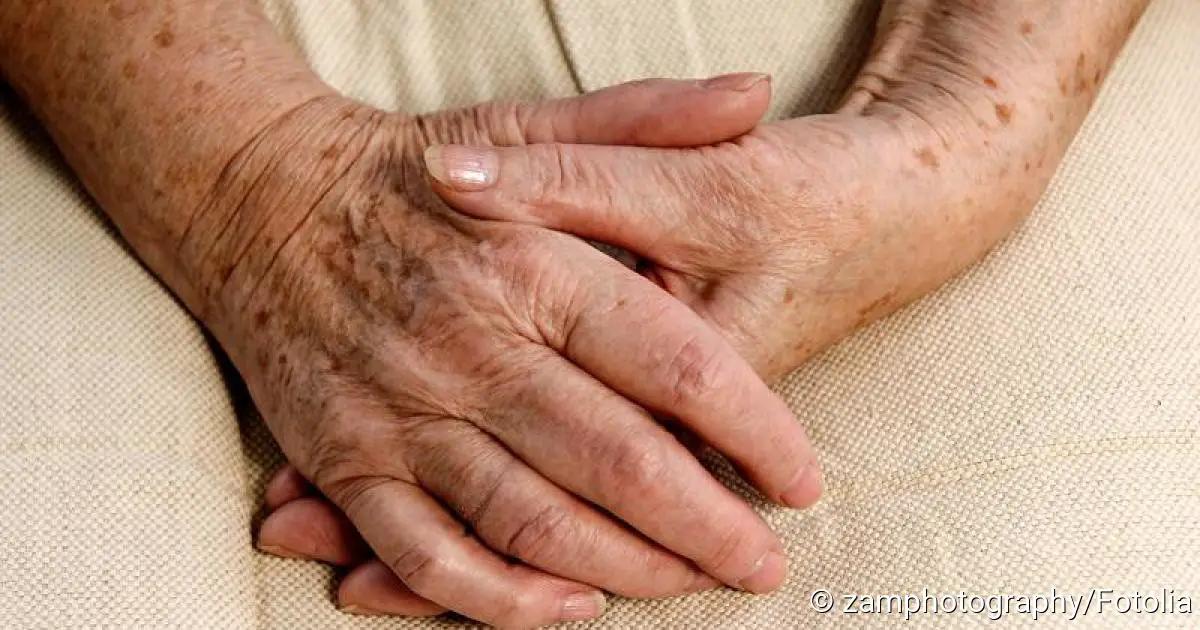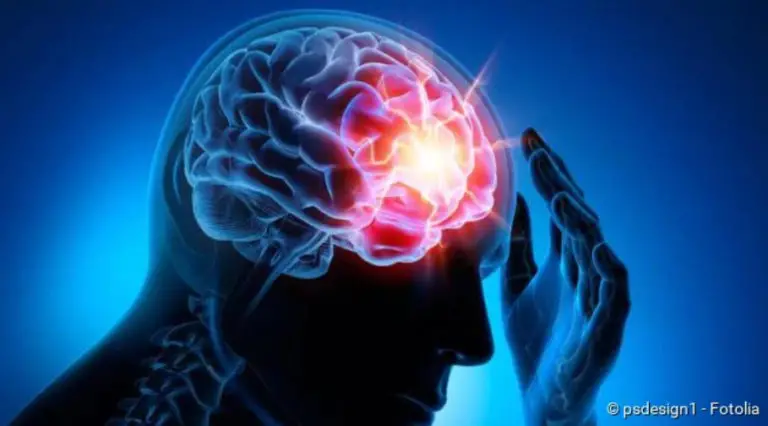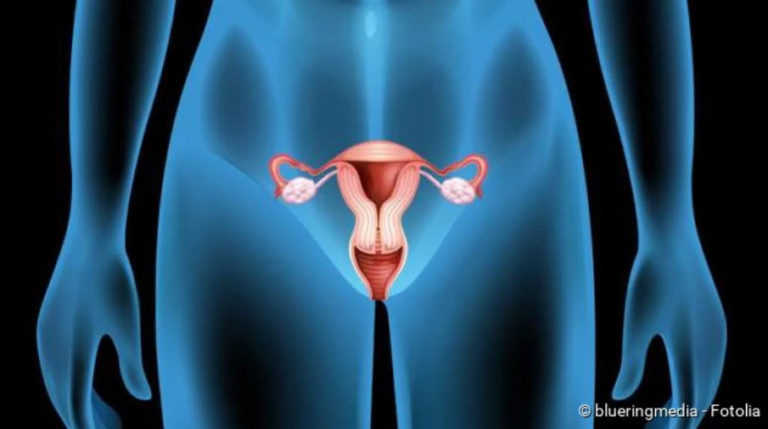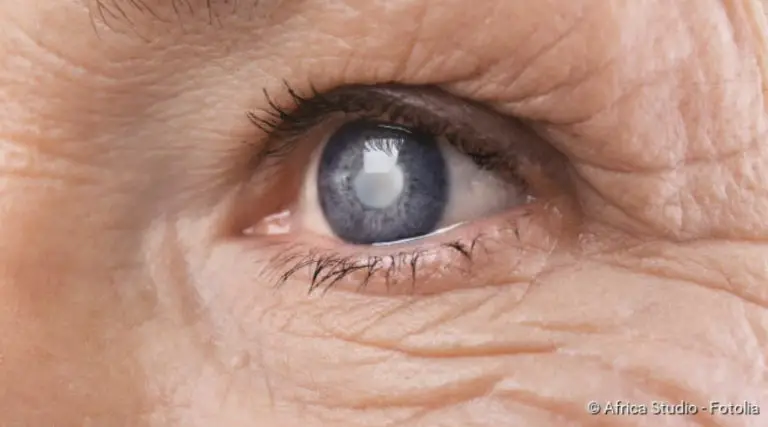Gout: Triggers, symptoms, treatment
Gout: Triggers, symptoms, treatment
Gout is a metabolic disorder that causes painful inflammation in the joints. The cause is too much uric acid in the blood, which is deposited in crystal form in the joint skin. However, the uric acid level can be controlled by a consistent change in diet and other lifestyle factors. Read here what else you can do if you suffer from gout, and find out all about gout.

Gout: short overview
- Causes: Mostly congenital, sometimes also acquired predisposition to increased uric acid levels. In combination with an unfavourable lifestyle, gout attacks occur.
- Adjust diet: Reduce foods rich in purines (meat, offal, certain types of fish), restrict high-fructose drinks, alcohol, especially beer
- Typical symptoms: Painful, sometimes swollen, reddened joints. The big toe is particularly often affected by gout. Later also movement restrictions deformations.
- Examinations/diagnosis: increased uric acid level, in later stages joint damage, kidney damage
- Therapy: lifestyle changes, uric acid-lowering drugs, physiotherapy, removal of nodular uric acid deposits, correction of deformed joints
This is how gout develops
With gout, the uric acid level in the blood is too high. Either because too much of it is produced or because the kidneys do not excrete enough of it. Tiny crystals of uric acid are formed, which are deposited especially in the joints. If the values are particularly high, an acute attack of gout with pain, redness and swelling is imminent.
Uric acid is formed during the splitting of purines. Purines are degradation products that are formed when the body breaks down diseased cells. However, they are also ingested with food, especially meat and offal, but also some vegetables.
Uric acid as a trigger: Uric acid is formed by the cleavage of purines. These are either taken in with purine-rich foods or are produced when diseased cells are broken down.
Primary gout – congenital disorder
Most gout patients suffer from a congenital metabolic disorder. Doctors then speak of a “primary hyperuricemia” or “primary gout”. In most cases the kidneys do not excrete enough uric acid.
In rare cases, the body produces so much uric acid that the kidneys are overtaxed. The cause is a genetic defect, the so-called Lesch-Nyhan syndrome. It occurs predominantly in boys.
Secondary gout – acquired disorder
In a so-called secondary gout, other diseases cause the excess of uric acid. In leukaemia, for example, the body’s own cells die en masse. This releases large quantities of purines which accumulate in the blood.
Other diseases that cause an increased production of uric acid are
- some tumor diseases
- Anaemia (anemia)
- certain drugs (cytostatic drugs)
- Irradiation as part of cancer therapy
Conversely, the uric acid level also increases if not enough uric acid is excreted. This is the case with kidney disease or with untreated or insufficiently controlled diabetes.
Gout, a disease of affluence
Gout is considered a disease of affluence. It is more widespread in industrialised countries than in poorer countries. Factors that promote gout include obesity, a diet rich in meat, fructose and alcohol, and lack of exercise.
Trigger for an acute attack of gout
An acute attack of gout occurs when the uric acid level exceeds a certain value. The main triggers are:
- excessive consumption of purine-rich foods such as meat and offal.
- excessive consumption of fruit-rich foods such as sweetened fruit juices.
- too much alcohol: alcohol also increases the uric acid level. This is especially true for beer, which is also particularly rich in purine
- strict diets: In order to gain energy, the body breaks down muscles during strict diets. This releases a lot of purines.
- physical overexertion: This produces lactic acid in the body, which is excreted by the kidneys and thus blocks the breakdown of uric acid.
- diuretics or laxatives: they thicken the blood when used excessively or for a very long time. This increases the uric acid concentration.
How long does a gout attack last?
The duration of an attack of gout can last for days or even weeks. Then the symptoms slowly subside. However, the duration of the gout attack can be significantly shortened by a quick, targeted treatment.
Gout: treatment
Gout treatment is designed to reduce the excess of uric acid in the blood to a healthy level. Doctors recommend as upper limits 5.5 to 6.4 milligrams per 100 milliliters of blood.
Gout typically affects the smaller joints, usually the toes. Arthrosis often affects the hips, knees or the joints between the vertebral bodies. With gout, the pain occurs, but then disappears again for a long time. In osteoarthritis, on the other hand, the pain is predictable, i.e. it occurs daily at certain times or with certain movements.
Those who adapt their lifestyle and can thus keep their uric acid level below 7 mg/dl have hardly any problems with gout. Anyone who does not manage to do this, or has a high genetic level, must take medication. But they are very well tolerated. In general, everyone should keep an eye on their uric acid level. Too much uric acid damages the organs long before gout symptoms appear.
Gout: What you can do yourself
Much can be achieved by changing one’s lifestyle, in particular through an adapted diet. If this is not sufficient for gout therapy, drugs can additionally lower the uric acid level.
Diet for gout
Those affected can do a lot themselves to reduce uric acid levels. The change in diet plays a decisive role in this:
Purine-rich foods only in small portions: Purines are contained in the genetic material of all living cells. During their degradation uric acid is formed. This applies to the overaged own cells as well as to food. Foods rich in purine include meat (especially offal and variety meats), sausage, seafood and certain types of fish. A predisposition to gout can lead to an acute attack of gout.
As little alcohol as possible: Excessive alcohol consumption is particularly problematic with gout. Its breakdown products are excreted via the kidneys and compete with uric acid. Thus alcohol slows down the breakdown of uric acid and causes its levels to rise. Even if you consume alcohol only exceptionally once in a while, this can provoke a gout attack. Beer is particularly critical. Besides alcohol it also contains a lot of purine.
Be careful with fruit sugar: Fructose is not only found in fruits. It is also used to sweeten juices, yoghurt or other foods. The breakdown of fructose in the body increases the formation of purine. At the same time the sugar, similar to alcohol, inhibits the excretion of uric acid via the kidneys.
Save fat: Too much fat also inhibits the excretion of uric acid. Gout patients should therefore eat as little high-fat food as possible. More than 30 percent of your daily calorie intake should not be covered by fat. This limit is quickly reached because fat has the highest energy density of all nutrients.
Pay particular attention to hidden food fats, for example in sausages or finished products.
If you would like to know in more detail how you should best feed yourself when suffering from gout, read the text Gout – Nutrition here.
What else you can do yourself
Reduce overweight: If your body mass index is over 25, you should lose body weight. If you weigh less, your uric acid level automatically drops. But watch out: Weight loss should be slow and controlled. Strict fasting can trigger an acute attack of gout!
Drink a lot: nutritionists recommend drinking at least two litres a day, preferably mineral water or unsweetened tea. The fluid in the body helps to keep the uric acid concentration low and supports the filtering function of the kidneys. This additionally flushes out uric acid and lowers the uric acid level.
Move, but don’t overdo it: Movement has a positive effect on the gout joints. The function improves and symptoms of inflammation subside faster. However, you should not overexert yourself physically with gout – the lactic acid produced slows down the breakdown of uric acid via the kidneys.
However, gout cannot be cured even with medication. As soon as the drugs are discontinued, their influence on the uric acid level is lost and this rises again.
The use of uric acid reducers is recommended in the following cases, for example:
- for uric acid levels above nine milligrams per deciliter of blood serum
- in case of family history of gout and elevated uric acid levels
- for joint gout
- in the presence of kidney stones
- for chronic gout
Medicines for uric acid reduction
Uric acid can be reduced in two ways: Either by eliminating it more or by reducing production. At the beginning of a gout treatment, both classes of uric acid reducers are usually prescribed. For the long-term treatment of gout, active ingredients are used that block production.
Urikosurika – increased uric acid excretion
Uricosurics cause increased uric acid excretion. Benzbromarone, for example, belongs to this group. Gout treatment with Urikosurika starts in small doses, as larger doses could provoke a gout attack. It is important that patients drink more than two litres per day.
Uricostatics – reduced uric acid formation
Uricostatics contain the active ingredient allopurinol. It inhibits an enzyme that is necessary for the last step of uric acid formation. As a result, the precursors of uric acid are increasingly found in the blood. However, these are more soluble in water and are therefore more easily excreted than uric acid itself. Treatment with uricosstatics can even dissolve already formed deposits of uric acid crystals. So-called gout tophi and kidney stones are thus ideally reduced.
What to do in case of a gout attack?
Drugs for long-term gout therapy are unsuitable for acute attacks of gout. The main aim here is to relieve complaints such as pain as quickly as possible. Anti-inflammatory painkillers are particularly effective in treating gout.
Non-steroidal anti-inflammatory drugs (NSAIDs): Non-steroidal anti-inflammatory drugs (NSAIDs) are the first drug of choice in acute gout treatment. They do not contain cortisone. Gout patients are mainly prescribed indometacin and diclofenac. As a rule, the symptoms improve within a few hours.
Cortisone therapy: If NSAIDs are not sufficient, glucocorticoids containing cortisol are used, for example prednisolone. If larger joints such as the knee are affected by gout, the doctor can inject cortisone directly into them. For smaller joints, cortisone is administered in tablet form. The cortisone preparations must not be taken for more than a few days.
If kidney function is impaired, treatment with cortisone is started immediately. Gout attack therapy with non-steroidal anti-inflammatory drugs is then not possible.
Colchicine: In the past, gout was often treated with colchicine. Today it is hardly ever prescribed because of its side effects such as diarrhoea, nausea and vomiting. It should not be taken during pregnancy. Men who want to father a child in the near future should also avoid this.
No self treatment with painkillers!
Self-treatment with over-the-counter painkillers is risky. Acetylsalicylic acid, for example, can significantly increase the uric acid level. Even in a symptom-free gout patient it can trigger an acute seizure. Gout treatment should never be carried out by the patient on their own, but always in consultation with a doctor.
Therapy also for freedom from symptoms
In order to avoid secondary diseases, a consistent therapy for gout is crucial. The German Society for Rheumatology recommends a uric acid-lowering therapy over at least five years. If tophi have already formed, then further treatment should continue for five years after their dissolution.
Operations for gout
If individual joints are already severely damaged, there is the option of replacing them with artificial joints. Such an operation is performed on an inpatient basis. After the operation a stay of a few days in hospital is necessary.
This is followed by movement and occupational therapy, so that patients learn to deal with the new joint. A new joint can cause severe pain at the beginning. As a rule, however, this procedure is less painful than continuing to live with the broken joint.
Gout tophies can also be surgically removed. The small nodular thickenings of the skin are mainly formed above the joints and on the ear cartilage. Although they are harmless, patients often perceive them as a cosmetic problem. Only a local anaesthetic is necessary for surgical removal. In individual cases, small scars may form in the areas where the tophi was removed. As a rule, however, they can be completely removed.
Physical gout treatment
A physical gout therapy aims to reduce existing complaints and reduce pain. It is also intended to prevent joint damage and malpositions in cases of prolonged gout.
- Heat and cold treatments can reduce gout pain in the joints.
- Procedures for muscle relaxation reduce pain.
- Physiotherapy strengthens the muscles and thus relieves the joints.
- Through physiotherapy and occupational therapy, movement restrictions and malpositions of the joints can be prevented or corrected.
Gout: Homeopathy
Many affected people swear by homeopathic remedies when asked “What helps against gout? However, the efficacy of homeopathic medicines has not yet been proven. However, if you are convinced of them, they can be used to accompany the therapy. However, you should not forgo a lifestyle change or, if necessary, conventional medicine. Homeopathic gout remedies are:
- Bryonia: is recommended especially for acute pain and for general relaxation of the state of mind.
- Colchicum: is used for nausea and general discomfort.
- Ledum: is used when cold applications improve pain.
- Lycopodium: is also used for acute pain and a restless general condition.
- Belladonna: is said to be effective against severe pain and fever.
Gout: home remedy
The following household remedies can be a useful supplement in the event of a gout attack:
Easy on the joints: Immobilize the affected joint. Do not stress it again until you have no more complaints. It may even be necessary to rest in bed.
Cool the joints: In addition, pain in the affected joints can be relieved with cooling compresses. All you need is a towel soaked in cold water. Alternatively, you can cool aching joints with quark wraps. Quark keeps the cold longer than a wet cloth.
Ice packs on the other hand are too cold and can quickly cause skin damage. Cooling should not take place for more than ten minutes at a time, but several times a day.
Warm the joints: Conversely, heat can also relieve the pain, for example by bathing in warm water. This relaxes muscles and joints and reduces pain. Hay flowers or chamomile blossoms are recommended as bath additives as a home remedy for gout attacks.
Drinking tea: Drinking tea is good against gout. It washes the uric acid out of the body. Often special teas such as tea made from linseed, birch leaves or as an infusion with a clove of garlic are recommended. However, the basis of the effect of tea is that it is diuretic.
Gout: Symptoms
The most common symptoms of gout are severe pain in the joints. They initially occur in attacks. If gout remains untreated, the symptoms gradually worsen and the gout becomes chronic.
Gout symptoms by stage
Over the course of years or even decades the first symptoms appear. How they manifest themselves depends on the stage of the disease.
Gout symptoms in stage I: Hyperuricemia
In the first stage only the uric acid level is elevated. In a healthy person it is three to six milligrams per 100 milliliters of blood serum. From a value of 6.5 milligrams per 100 milliliters of blood serum, physicians speak of hyperuricemia.
A slightly elevated uric acid level can be present for several years without causing symptoms. The first signs of gout are then kidney gravel, kidney stones or an acute attack of gout (stage II). The higher the uric acid level rises, the greater the risk of a gout attack.
Gout symptoms in stage II: Acute gout
If the uric acid level exceeds a certain value, an acute attack of gout occurs. Symptoms are severe pain in individual joints.
Most commonly, the base joint of the big toe is affected, as well as other joints of the legs and feet. Hands and arms are less frequently affected. Untreated, a gout attack lasts from a few hours up to several days. Afterwards the symptoms slowly subside.
Uric acid crystals are deposited in the joints and cause the symptoms. The base joint of the big toe is particularly susceptible to gout. But the knee joint as well as shoulder and finger joints are also frequently affected.
In more severe cases additional inflammatory symptoms occur. The affected joints are then reddened, swollen and warmer than usual. They are also usually extremely touch-sensitive. The skin above the joint may itch or peel. Doctors call this arthritis urica.
Other possible symptoms in stage II:
- Fever
- Headache
- Tachycardia
- Nausea and vomiting
- Feeling of weakness and limited performance
The first attack of gout usually occurs at night. If it is not treated, the seizure can last for several days and up to two weeks. Then the symptoms of gout slowly subside again. If treated in time, the duration of gout attack can be shortened.
With repeated attacks of gout, the mobility of the affected joints becomes increasingly poor. It is more difficult for patients to walk and grasp.
Gout symptoms in stage III: Intercritical phase
Doctors call the intercritical phase the period between two attacks of gout. If left untreated, the symptoms of gout occur repeatedly at irregular intervals. During the intercritical phase, the patients are initially free of symptoms, but their uric acid level is further increased.
Gout symptoms in stage IV: Chronic gout
If the gout progresses further, symptoms such as pain and restricted movement also occur between attacks: The gout becomes chronic.
Articular gout: In a chronic course, more and more uric acid crystals are deposited in the joints. They are then permanently reddened and swollen and also hurt at rest. Finally, joint changes occur which deform the joint and restrict its mobility. Such changes can no longer be reversed with medication.
Soft tissue gout: The uric acid crystals are also deposited in other body tissues. Under the skin, e.g. ear cartilage, or above the affected joints, small hard tissue nodules with white spots, so-called joint ectophies, sometimes form. The soft tissue gout particularly frequently affects fingers and feet. The internal organs are also affected, especially the kidneys.
Kidney gout: Uric acid crystals also collect in the kidneys. They initially form tiny stones, the so-called kidney gravel. If this clumps together, larger kidney stones are formed. They can severely impair kidney function. If they clog the drainage system of the kidney, the urine backs up into the kidney. The organ can then become inflamed and eventually fail. In 40 percent of cases of gout, the kidney is even affected before the first attack occurs.
Gout: examinations and diagnosis
If gout is suspected, the family doctor or a doctor for internal medicine, i.e. an internist, is the right contact person. In an anamnesis interview he will take your medical history and ask you about your complaints. He will then ask various questions, for example:
- Have you had similar complaints in the past?
- Do you have relatives with similar complaints?
- What is your diet?
- Do you drink alcohol?
- Do the complaints occur permanently or in attacks?
Physical examination
After the anamnesis a physical examination takes place. The doctor palpates the joints, the abdomen and the lower abdominal organs in order to be able to localise pressure sensitivities or pain. Under certain circumstances he may discover nodular tissue changes above the joints (so-called gout philosophy), which are typical for gout.
With movement tests the doctor can determine movement restrictions of the joints. Above all, an attack of gout in the foot must also be distinguished from other injuries such as sports injuries or twisting.
Uric acid level
Among other things, a blood test can detect an elevated uric acid level. In a healthy person, uric acid levels are between three and six milligrams per 100 milliliters of blood serum. Values above 6.5 milligrams per 100 milliliters of blood serum are referred to as hyperuricemia.
After an acute attack of gout, the concentration of uric acid drops back to normal levels. Therefore, gout cannot be excluded with certainty, even if the values are normal.
Inflammatory markers in the blood
Certain inflammation markers in the blood provide further evidence of gout. This includes
- increased value of the C-reactive protein (CRP value)
- increased number of white blood cells (leukocytes)
- increased blood cell sedimentation rate (BSG)
In order to confirm the diagnosis of gout, a sample of the synovial fluid is also examined. If uric acid crystals can be detected here, it is most likely gout.
X-ray and ultrasound examinations
On the basis of X-rays, the doctor can determine what damage the gout has caused to the joints. In addition, sometimes an ultrasound is also performed. An X-ray examination with contrast agents can clarify whether the kidneys have been damaged by the disease.
Renal function test
A kidney function test can be used to determine whether the performance of the kidneys is impaired, and if so, to what extent.
Gout: course of disease and prognosis
Most cases of gout occur for the first time between the ages of 40 and 60. About two percent of the adult population in the industrialized countries suffer from gout. Men are affected much more frequently than women.
The predisposition for increased uric acid levels is usually congenital and therefore not curable. However, the uric acid level can often be permanently lowered through consistent therapy. This does not eliminate the danger of an acute attack of gout, but significantly reduces it.
Prognosis in acute attacks of gout
If the uric acid level exceeds a certain value, an acute attack of gout occurs. It lasts untreated for a few hours up to several days. Afterwards the symptoms slowly subside. After an attack of gout, it can take some time (even months to years) until the next attack of gout occurs. The duration of gout attacks and the periods between them vary greatly from person to person.
Gout: Long-term forecast
The course of the disease and prognosis therefore depend on how pronounced the predisposition to high uric acid levels is and how consistently a patient takes his or her uric acid-lowering medication, or how well he or she implements a uric acid-lowering lifestyle. This includes above all a diet low in purine, fructose and alcohol.
No therapy break
Between two attacks of gout there can be long periods of time during which the patients have no symptoms. Even in these “intercritical phases” it is important to continue the therapy. If it is interrupted, the symptom-free sections are shortened. Increasingly, symptoms such as pain and restricted mobility also occur in the periods between two attacks of gout.
Permanent joint changes
Once damage to the joints has occurred, it does not regress. They can cause permanent pain or loss of movement. In severe cases, the joints can also become deformed. Pronounced joint damage caused by gout is known as arthritis urica.
Kidney damage and kidney stones
A gout that goes untreated for a long time can also cause various secondary diseases, especially of the kidneys. A frequent complication of gout is kidney stones. They close the drainage channels of the kidney and the urine accumulates. This is usually followed by an inflammatory reaction. As a result of this and the progressive accumulation of uric acids, the kidneys may eventually fail. Doctors speak of a gout kidney. In order to prevent such damage, gout therapy should be carried out as early as possible and consistently over the long term.
Chronic gout
Chronic gout develops relatively rarely today. The patients suffer from permanent pain. Unlike an acute attack of gout, they do not subside. Chronic gout develops primarily when hyperuricemia persists over a long period of time and is not treated. As a rule, chronic gout tends to affect older rather than younger people.






